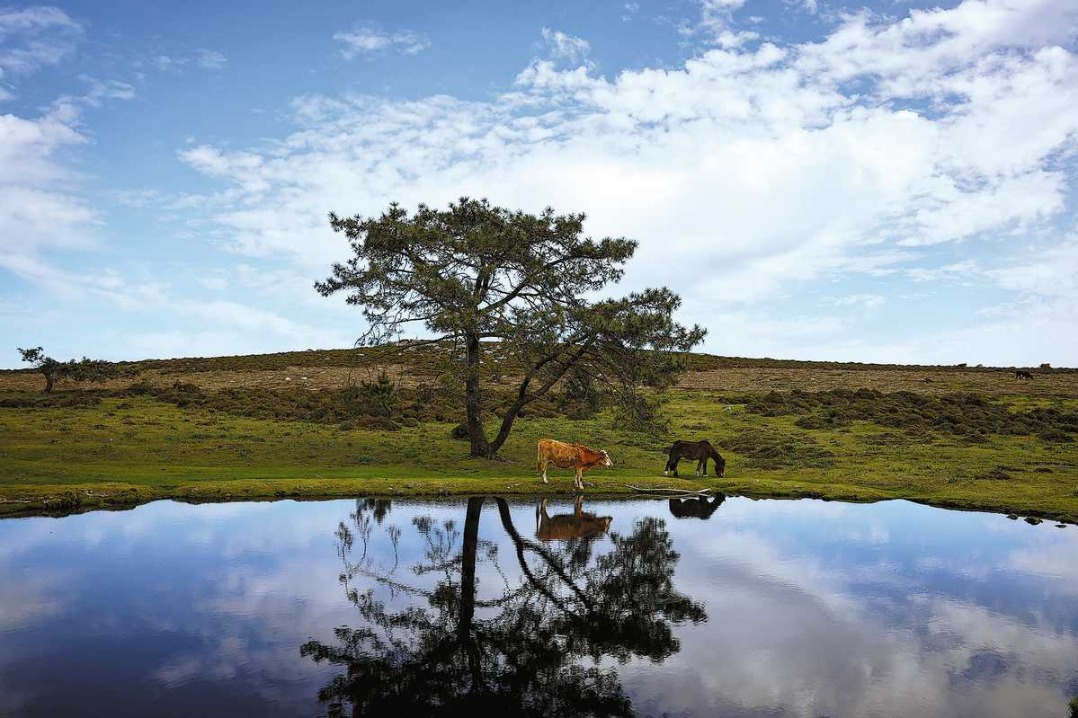Profusion of all species


China is striving to strike a balance between economic development and biodiversity conservation
When it comes to biodiversity conservation, how to strike a balance between ecological protection and local community development is a common challenge facing the world, which has a bearing on realizing the United Nations 2030 Sustainable Development Goals. Communities with rich biodiversity mostly have weak economic foundations, a mono development model and lack of growth impetus. The resource and environmental constraints imposed on communities with rich biodiversity give rise to the "biodiversity curse", trapping them in the mire of economic backwardness.
With the Kunming Declaration, adopted at the 15th meeting of the Conference of Parties to the UN Convention on Biological Diversity held in October, "Building a shared future for all life on earth" has become a global consensus.
Having embarked on a path of green and sustainable development, China has made remarkable progress in coordinating ecological protection and community development.
The country has put in place a strict system for ecological and environmental protection, having built a protected areas system with national parks as the mainstay. So far, the country has established more than 10,000 natural protected areas of all types, covering about 18 percent of its land area. The well-planned protected areas system has brought 90 percent of terrestrial ecosystem types, 85 percent of wildlife species and 65 percent of higher plants species under protection, and has sheltered more than 300 different wild animal species and over 130 wild plant species under State protection.
There are several aspects to the country's efforts to seek a balance between biodiversity protection and local community development.
First, seeking new economic growth drivers for areas with rich biodiversity and enabling local communities to share the benefits of the protection of local biodiversity and economic development. By adhering to the path of innovative development, China supports local communities to use natural resources in a sustainable and efficient way, and break away from the traditional path of over-exploiting nature, thus forming a green economic pattern. For example, Longli county in Southwest China's Guizhou province boasts a typical karst landform, a unique ecological system and rich biodiversity. It used to be a poverty-stricken county. In recent years, by developing the chestnut rose industry and combining farming with ecotourism, the county has pulled 7,100 people out of poverty and got rid of local people's dependence on logging for a living, realizing common prosperity and coordinated development between urban and rural areas.
Second, coordinating ecological protection and economic development through targeted poverty alleviation policies, infrastructure building, skills training, development of leisure agriculture and the forest-based non-timber economy to increase the added value of products and boost the incomes of local residents. By aligning poverty alleviation efforts with the protection of the local ecosystems, the government offers local people jobs in forest cultivation and management, and wildlife protection to increase their incomes. Higher subsidies have been granted to households that return their farmland to forest, grassland or wetland. In addition, people that have lost ability to work have been covered by social security systems through government transfer payments.
Third, letting the market play a decisive role in resources allocation and improving the utilization of natural resources in areas with rich biodiversity, and boosting the incomes of local residents while promoting natural protection. Yangxian county in Shaanxi province, which is known for its rich biodiversity, was once a poverty-stricken county. In 1981, seven crested ibis, which were thought to be the world's only wild population of the species, were spotted in Yangxian after the species was declared extinct in Japan and other range states. To conserve the endangered birds, which forage in rice paddy fields, locals began cultivating organic rice free of chemical fertilizers and pesticides, and used biological technologies to control pests and fertilize the soil, which offset the decline in incomes caused by lower yields. Locals also developed homestay and tourism businesses based on birdwatching to raise incomes. Thanks to the decades of conservation efforts, the population of crested ibis has surged from seven to more than 5,000, making it a shining example of protecting endangered species while maintaining local economic development.
Fourth, raising public awareness of ecological protection and mobilizing resources from the whole society for biodiversity conservation. In the Northeast China Tiger and Leopard National Park, the Sanjiangyuan National Park and the Wuyishan National Park, there are volunteers that participate in science popularization, the patrolling and monitoring of protected areas, as well as in the development of local communities, becoming an important complement to professional conservationists and social workers. Yunnan province is one of the areas in the world with the richest biodiversity and home to China's only sanctuaries for Asian elephants. To protect the habitats of the animals, local conservation organizations launched an online crowd-funding program to widely engage all those who care about the fate of elephants, with the funds raised larger than expected.
With such efforts the richness of the country's biodiversity and local economies are both on a steady rise.
The author is a professor with the School of Economics and Management at Beijing Forestry University. The author contributed this article to China Watch, a think tank powered by China Daily. The views do not necessarily reflect those of China Daily.


































